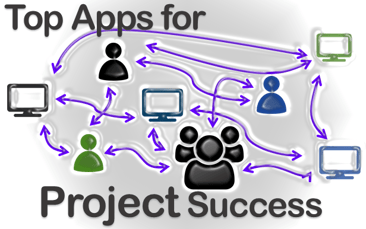 As a conscientious manager, the day may come when you look to improve your team's project management in the interest of better efficiency and tracking. I found myself in exactly that same position a couple of years ago when I was managing a number of small departments. We had many different initiatives going on with very little formal project management. People were working hard and trying to do the right thing, but we were lacking an overarching system for managing our projects. That meant the scope was often ephemeral, the timelines and budgets were fuzzy or non-existent, and accountability was variable. I knew we could do better.
As a conscientious manager, the day may come when you look to improve your team's project management in the interest of better efficiency and tracking. I found myself in exactly that same position a couple of years ago when I was managing a number of small departments. We had many different initiatives going on with very little formal project management. People were working hard and trying to do the right thing, but we were lacking an overarching system for managing our projects. That meant the scope was often ephemeral, the timelines and budgets were fuzzy or non-existent, and accountability was variable. I knew we could do better.
Project Management 101
In service of organizational goals
If you found your way to this post, then I probably don’t need to sell you on the benefits of project management (better internal coordination, shorter completion times, lower costs, higher quality and increased reliability, improved productivity, and higher morale, just to name a few.) Once you accept that, next you get to the heavy lifting of figuring out how to implement project management tools and processes in a way that is truly effective and beneficial for your organization. How do you help your team members behave like project managers even if that isn’t how they think of themselves? How do you help them succeed and thrive as project managers?
In my experience, it all boiled down to providing the right culture, training, and tools to empower them. We created enough structure to reap the benefits of project management discipline, but not so much that it took away from achieving the desired outcomes. Project management needs to be in service to the higher goals of the organization.
How to evaluate project management applications
There are plenty of great materials available on project management basics, so this post will focus on what software applications you might use to support your work.
Start by creating a list of the various project management activities that you would like software to facilitate, then prioritize which activities are most important in your context. For example, task scheduling is a common desire. Or team communication and collaboration, with online meeting capabilities. Maybe you already have those features available elsewhere within your organization and what you really need is a solution for budgeting. On your evaluation checklist, be sure to have a column for cost: Pricing for project management applications can vary from "free" to "luxury car."
It’s also important to consider which project management approach you will be using. Often, certain applications are built to facilitate a given methodology. For the traditional approach, Microsoft Project is the gold standard, but there are certainly others availabe. For Agile, I like Jira by Atlassian and Trello (it's free!) which seems to have a loyal, almost cult-like following. (Just search organize with trello to see what I mean.)
It's also useful to think about how complex you want your project management applications to be. More robust tools, like Microsoft Project, will have features and functions to do advanced project management activities, but can take more time to learn. Some people find them overwhelming and cumbersome. Simple tools, like Basecamp, are easy to use and learn, and are often enough for straightforward projects and small teams, but they have limited functionality. And then there are a whole bunch of great tools somewhere in between, like WorkZone and Wrike.
My most heartfelt advice is to always always always come back to scope: what are you trying to achieve, and what is minimally essential in order to reach your desired outcome? Provide just enough formality to achieve your desired results; too much for the context can be just as deadly as not enough.






